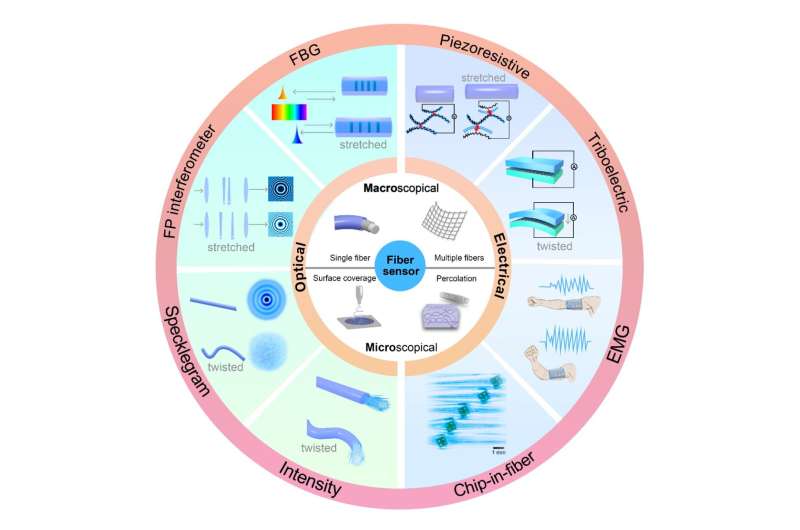
The rapid development of artificial intelligence (AI) in the past decade has greatly enhanced the ability of wearable devices to process complex data. Among them, machine learning—a major category of AI algorithms—and its important branch, deep learning, are the main thrust of this wave of AI.
Machine learning eliminates the labor cost of manually extracting data features, and its deep learning branch has powerful insights into hidden features. Their large demand for data fits the massive information brought by this era of information explosion.
A recent study summarizes all machine learning algorithms that have been used in conjunction with fiber sensors, divided into two categories: traditional machine learning algorithms and deep learning algorithms. Traditional machine learning algorithms include linear regression (LR), k nearest neighbors (KNN), support vector machine (SVM), random forest, XGBoost, and K means clustering.
The paper is published in the journal Advanced Devices & Instrumentation.
After having a general understanding of machine learning algorithms, this article classifies and summarizes fiber sensors based on their working principles and fiber sizes. The working principles are mainly divided into two categories: optical and electrical. Optical includes FBG, Fabry-Pérot interferometer, Specklegram, and light intensity, and electrical includes piezoresistive, triboelectric, EMG, and chip-in-fiber.
Fiber sensors are a feasible alternative to hard electronic devices for daily wear. Combined with machine learning, they can serve as daily smart clothing. But there are still many areas for improvement.
First, most of the current fiber sensors that use machine learning only collect a single kind of signal and this signal is usually mechanical force and deformation, like pressure-based gesture recognition in gloves. Other information, such as light intensity, light color, temperature, humidity, surface roughness, and other very meaningful information, is not integrated.
Secondly, machine learning algorithms are advancing with each passing day. The latest algorithms, such as reinforcement learning, generative adversarial network (GAN), self-supervised learning, and attention mechanism (GPT), have very few applications in this area.
It is believed that as the above-mentioned directions are further studied, wearable devices based on fiber sensors and AI will become more intelligent, comfortable, and efficient, and enter everyone's daily life.
More information: Ziwang Luo et al, Advances in Fiber-Based Wearable Sensors with Machine Learning, Advanced Devices & Instrumentation (2024). DOI: 10.34133/adi.0054
Provided by Advanced Devices & Instrumentation
Citation: Advances in fiber-based wearable sensors with machine learning (2024, August 22) retrieved 22 August 2024 from https://techxplore.com/news/2024-08-advances-fiber-based-wearable-sensors.html
This document is subject to copyright. Apart from any fair dealing for the purpose of private study or research, no part may be reproduced without the written permission. The content is provided for information purposes only.
